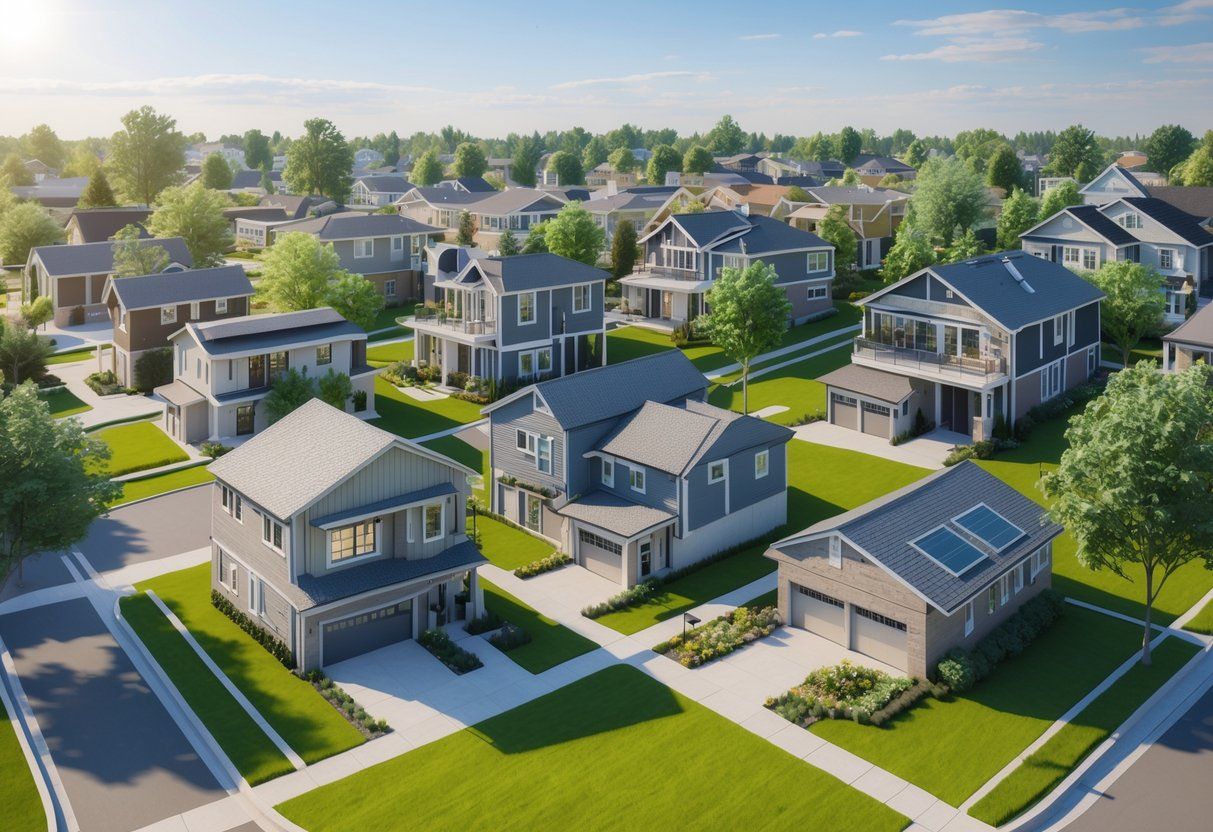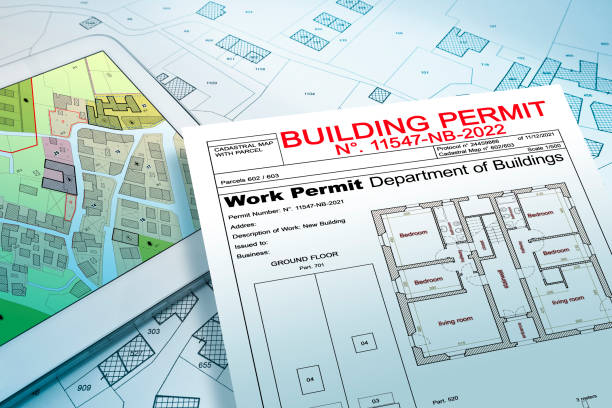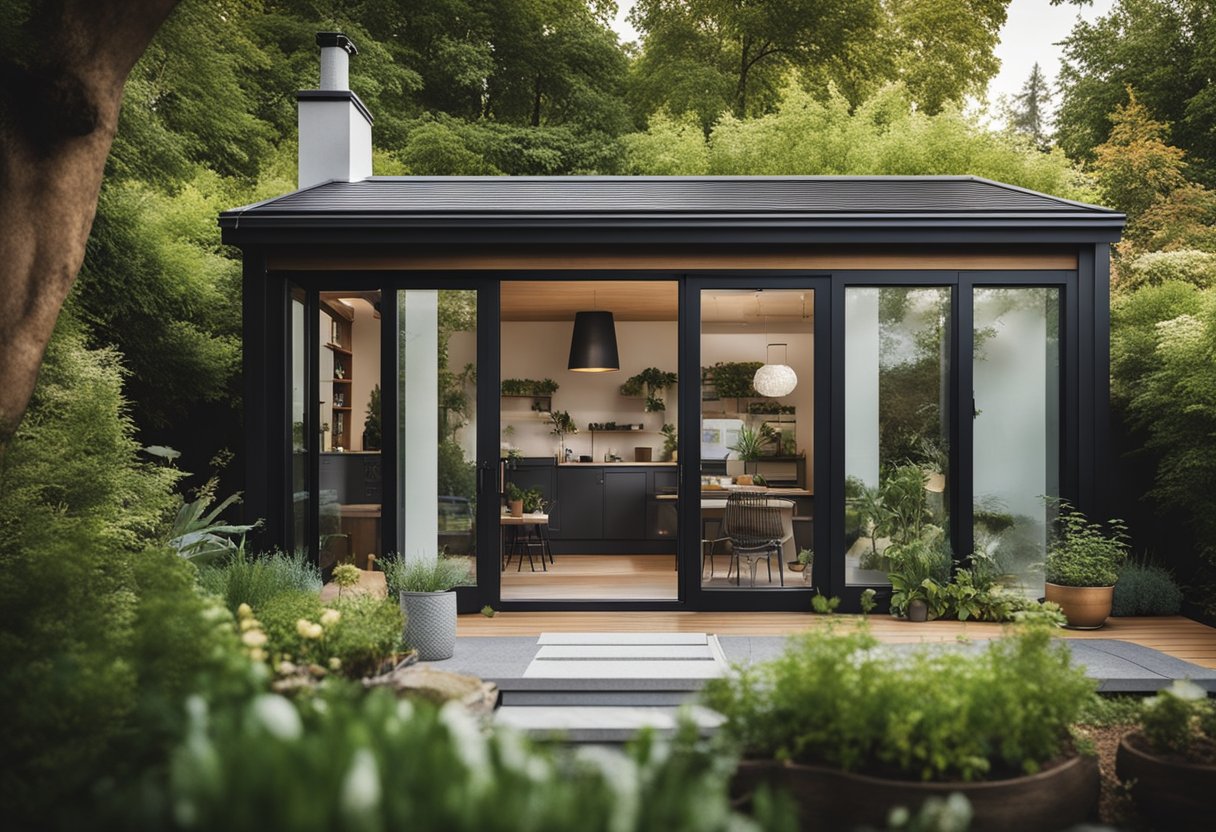Table of Contents
Where Are Accessory Dwelling Units Legal? A 2025 Legal Guide
Accessory dwelling units are becoming more popular as homeowners look for ways to create extra housing and generate rental income. These small secondary homes can be built on the same property as your main house. ADUs are legal in most U.S. states, but local zoning laws and building codes vary widely between cities and counties.

The rules for building ADUs change depending on where you live. Some states like California and Washington have made it easier to build these units by relaxing restrictions. Other areas still have strict rules about size limits, parking requirements, and who can live in the units.
Understanding your local laws is crucial before you start planning an ADU project. ADU regulations are changing as more communities recognize their benefits for housing shortages. Cities might require specific permits, design standards, or owner occupancy rules that affect your plans.
Key Takeaways
- ADUs are legal in most states but local zoning laws determine specific requirements and restrictions
- States like California and Washington have the most permissive ADU policies while other areas maintain stricter controls
- Building permits, design standards, and occupancy rules vary significantly between different cities and counties
Understanding Where Accessory Dwelling Units Are Legal
ADU legality depends on both state laws and local regulations, with some states creating comprehensive statewide ADU laws while others leave decisions entirely to cities and counties. The legal landscape varies dramatically across the country, creating different opportunities for homeowners based on their location.
Definition of Accessory Dwelling Units and Types
An accessory dwelling unit is a secondary housing unit located on the same property as a primary residence. These units must include their own kitchen, bathroom, and sleeping area to qualify as independent living spaces.
ADUs go by many names depending on your location. Common terms include granny flats, in-law units, backyard cottages, and secondary housing units.
Types of ADUs include:
- Detached ADUs – Separate structures built on your property
- Attached ADUs – Connected to your main house but with separate entrances
- Internal ADUs – Created within existing space like basements or attics
- Garage conversions – Converted from existing garage structures
Each type faces different regulations. Detached units often have height restrictions around 16 feet, while attached units may follow your main house’s height limits.
Size requirements vary by location. Some areas allow units up to 1,200 square feet, while others limit ADUs to a percentage of your main dwelling’s size.
State Versus Local Authority in Legalization
Your ability to build an ADU depends on whether your state has statewide legislation or leaves decisions to local governments. This creates two distinct regulatory approaches across the country.
States with statewide ADU mandates override restrictive local rules. California leads this approach, with laws since 1982 that have progressively reduced barriers to ADU development.
Oregon and Washington also have comprehensive state laws. Washington’s House Bill 1337 requires urban areas to allow at least two ADUs per lot plus the main house.
States with local control delegate ADU authority to cities and counties. Florida, Texas, and North Carolina follow this model, creating vastly different rules within the same state.
Local control means you must research your specific municipality’s zoning codes. One city might welcome ADUs while a neighboring town prohibits them entirely.
This creates unpredictable regulations even within single metropolitan areas. Your local planning department becomes your primary resource for understanding applicable rules.
Overview of Current National Legal Landscape
The national trend strongly favors expanding ADU legality as housing shortages drive policy changes. Multiple states have recently passed or strengthened ADU legislation to address affordability crises.
States with strong ADU laws include:
StateKey FeaturesCaliforniaNo owner-occupancy requirements, streamlined permittingOregonUnits up to 70% of main house size, relaxed parkingWashingtonTwo ADUs per lot allowed, no parking mandatesMaineADUs allowed in all single-family zonesColoradoSupersedes HOA restrictions by 2025
New Hampshire prohibits municipalities from requiring units smaller than 750 square feet. Massachusetts now allows 900-square-foot ADUs without special permits in single-family zones.
Common statewide ADU regulations include:
- Eliminating minimum lot size requirements
- Reducing or removing parking mandates
- Ending owner-occupancy requirements
- Streamlining permit approval processes
- Limiting impact fees for smaller units
States continue adopting ADU-friendly legislation as housing demand increases. Vermont and Connecticut have joined the growing list of states with supportive ADU laws.
The regulatory trend clearly moves toward making ADUs more accessible nationwide.
States With Permissive ADU Laws

Several states have enacted comprehensive legislation that makes building accessory dwelling units significantly easier. These ADU-friendly states have removed common barriers like parking requirements and owner-occupancy mandates while streamlining permitting processes.
California: Model for Statewide ADU Legalization
California leads the nation in permissive ADU laws, with legislation dating back to 1982 that has progressively reduced barriers. The state has eliminated minimum lot size requirements and streamlined permitting processes.
Key California ADU Features:
- Detached ADUs up to 1,200 square feet allowed
- No owner-occupancy requirements as of January 2024
- Reduced impact fees for units under 750 square feet
- Ministerial approval process without discretionary review
California’s approach focuses heavily on addressing affordable housing shortages. The state prohibits local jurisdictions from imposing restrictive requirements that previously blocked ADU development.
You can build ADUs by right in most single-family zones. Local governments cannot require special permits or public hearings for compliant projects.
Oregon and Washington: Proactive ADU Policies
Oregon and Washington have adopted comprehensive statewide ADU legislation that prioritizes housing affordability and availability. Both states have removed significant regulatory barriers.
Oregon’s ADU Rules:
- ADUs up to 70% of main house size
- Detached units limited to 900 square feet
- Relaxed parking requirements
- Focus on increasing housing options
Washington’s House Bill 1337 became effective in July 2023. The law requires urban growth areas to allow at least two ADUs per lot in addition to your primary residence.
Washington’s Key Changes:
- Eliminated parking mandates
- Ended owner-occupancy requirements
- Limited impact fees
- Streamlined approval processes
Both states recognize ADUs as crucial tools for addressing housing shortages while maintaining neighborhood character.
New England and Other ADU-Friendly Jurisdictions
Multiple states across New England and other regions have implemented permissive ADU laws to encourage development. These jurisdictions focus on removing local barriers that previously restricted construction.
Maine’s 2022 law allows ADUs in all single-family zones. New Hampshire prohibits municipalities from limiting ADU size to less than 750 square feet or requiring owner-occupancy by relatives.
Other ADU-Friendly States:
- Vermont: Statewide measures encouraging development
- Connecticut: Streamlined approval processes
- Colorado: Metropolitan areas must allow ADUs by June 2025
- Massachusetts: ADUs up to 900 square feet allowed by right
Colorado’s upcoming law will supersede HOA restrictions and allow non-owner occupied units. Massachusetts eliminated special permit requirements through its Affordable Homes Act.
These states typically limit ADU height to around 16 feet for detached units. Many have reduced or eliminated parking requirements, especially near public transportation.
Areas With Restrictive or Conditional ADU Policies

Many states maintain strict zoning laws that limit ADU development through complex approval processes and narrow eligibility requirements. Local zoning restrictions often create significant barriers that can delay projects for months or increase costs by thousands of dollars.
States With Stringent Restrictions
Several states impose strict limitations on ADU construction through comprehensive zoning codes. Texas requires specific conditional use permits in most municipalities, making the approval process lengthy and expensive.
Florida restricts ADUs to designated zones only. Many counties prohibit them entirely in single-family residential areas.
States with major restrictions include:
- Texas (conditional use permits required)
- Florida (limited zoning areas)
- Georgia (varies by county)
- North Carolina (strict size limitations)
Illinois allows ADUs but leaves most decisions to local governments. This creates a patchwork of different rules across cities and counties.
Arizona permits ADUs statewide but many cities have additional requirements. Some areas require owner occupancy or limit rental periods.
Local Barriers and Zoning Variances
Local zoning restrictions create the biggest obstacles for ADU development. Many cities require expensive zoning variance applications that cost $2,000 to $5,000.
Common local barriers include:
- Parking requirements (1-2 additional spaces)
- Lot size minimums (often 6,000+ square feet)
- Owner occupancy rules
- Design review committees
Some municipalities require public hearings for ADU approval. Neighbors can object and delay projects for months.
Setback requirements often make ADUs impossible on smaller lots. Many areas require 10-15 feet between structures.
Height restrictions limit ADU size and design options. Most areas cap ADUs at one story or 16 feet maximum height.
Impacts of Restrictive ADU Regulations
Restrictive ADU regulations significantly reduce housing supply in areas that need it most. Cities with complex approval processes see 60-80% fewer ADU applications compared to streamlined areas.
High permit fees discourage homeowners from building ADUs. Some cities charge $15,000 or more in development fees.
Key impacts include:
- Reduced affordable housing options
- Higher construction costs
- Longer approval timelines
- Limited rental income opportunities
Restrictive zoning codes particularly hurt low-income families. They cannot afford lengthy approval processes or expensive variance applications.
Complex regulations also create confusion among homeowners and contractors. Many abandon ADU projects due to unclear requirements or changing rules.
Key Legal and Regulatory Factors for ADU Legality
Several key factors determine whether you can legally build an ADU on your property. Zoning laws dictate where ADUs are permitted, while building codes establish safety standards and permitting processes ensure compliance with local regulations.
Zoning Laws and Code Compliance
Your property’s zoning designation determines whether ADUs are allowed. ADUs are typically allowed in residential zones, but specific regulations vary by location.
Most single-family residential zones permit ADUs. However, some areas restrict ADUs in certain commercial or industrial zones. You need to check your local zoning map to confirm your property’s designation.
Building codes establish minimum safety requirements for ADUs. These include:
- Fire safety standards – sprinkler systems, smoke detectors, egress windows
- Electrical systems – proper wiring, circuit breakers, GFCI outlets
- Plumbing requirements – water supply, sewage connections, fixtures
- Structural integrity – foundation, framing, load-bearing elements
Local agencies cannot waive basic health and safety requirements. Your ADU must meet the same building code standards as any other dwelling unit.
Some jurisdictions have adopted streamlined building codes specifically for ADUs. These may allow certain flexibility while maintaining safety standards.
Permitting and Approval Processes
Most jurisdictions require permits before you can build an ADU. The permitting process typically involves plan review, inspections, and approval from multiple departments.
California law requires agencies to respond within 60 days of ADU plan submission. This includes planning departments and utility companies.
The standard permitting process includes:
- Initial application with architectural plans and site surveys
- Plan review by building, planning, and fire departments
- Permit issuance after approval of all requirements
- Construction inspections at key milestones
- Final approval and certificate of occupancy
Some areas offer expedited permitting for pre-approved ADU designs. Cities must have pre-approved ADU plan schemes in place to streamline the approval process.
You may need additional permits for electrical, plumbing, or mechanical work. Coordinate with all relevant departments early in the process.
Setback and Lot Size Requirements
Setback requirements determine how close your ADU can be to property lines. These rules protect neighbor privacy and maintain neighborhood character.
Standard ADU setbacks typically require:
- 4 feet from side and rear property lines
- Front setbacks that match existing zoning requirements
- Special provisions for ADUs under 800 square feet
Current California law states that front setback requirements cannot prevent ADUs under 800 square feet from being built. This removes a major barrier for smaller units.
Lot size requirements vary significantly by location. Local agencies may not impose minimum lot size requirements that would prevent ADU construction.
Some areas have maximum lot coverage ratios. This limits how much of your property can be covered by buildings and structures.
Height restrictions also apply to ADUs. Most jurisdictions allow 16-foot heights, with some permitting taller structures near public transit or on larger lots.
Requirements for Building and Using ADUs
Building an ADU requires following specific rules about who can live there, what types you can build, and meeting safety standards. Most areas have owner-occupancy rules and strict building codes that govern both attached and detached ADU construction.
Owner-Occupancy and Usage Restrictions
Many cities require you to live in either the main house or the ADU on your property. This owner-occupancy requirement prevents investors from buying homes just to build rental ADUs.
Some areas let you rent out your ADU for income. Others restrict how long tenants can stay or require family members only.
Common usage restrictions include:
- Minimum lease terms (often 30+ days)
- Limits on the number of occupants
- Parking requirements for tenants
- Restrictions on short-term rentals like Airbnb
You need to check your local zoning laws before building. ADU regulations vary significantly between cities even within the same state.
Types of ADU Construction Allowed
You can choose from several ADU types depending on your property and local rules. ADUs come in various forms to fit different needs and lot sizes.
Attached ADUs connect to your main house through a shared wall. These include basement conversions and additions to existing homes.
Detached ADUs are separate buildings on your lot. These standalone structures offer more privacy but cost more to build.
Other options include:
- Garage conversions
- Over-garage units
- Tiny homes (where allowed)
- Internal conversions within existing space
Your lot size, setback requirements, and height limits determine which type you can build. Some areas only allow one type of ADU construction.
Design, Safety, and Building Standards
All ADU construction needs building permits and must follow local building codes. You cannot skip the permitting process even for small units.
Safety requirements typically include:
- Proper electrical systems and outlets
- Adequate plumbing and water pressure
- Fire safety measures and smoke detectors
- Proper ventilation and windows
- ADA accessibility features (in some areas)
Size limits usually range from 400 to 1,200 square feet. Your ADU cannot be larger than your main house in most places.
Building codes also cover parking requirements, utility connections, and landscaping rules. The permitting process starts with submitting detailed plans to your local building department.
You must use licensed contractors for most ADU work. DIY construction often violates local codes and creates problems when selling your home.
Economic, Social, and Community Implications
ADUs create significant financial opportunities for homeowners while helping communities address housing challenges. These units generate rental income, boost property values, and expand affordable housing options, though various incentives and barriers shape their development.
Rental Income and Property Value Impact
ADUs provide homeowners with steady rental income that can help offset mortgage payments and property taxes. Properties with ADUs are priced around 35% higher than homes without them in larger cities.
Monthly rental income varies by location:
- San Diego ADUs: $1,200-$2,500 per month
- Traditional apartments in San Diego: $3,000 per month average
Your property gains value through the additional living space and income potential. This makes your home more attractive to future buyers who see the rental income opportunity.
The increased property values also generate more tax revenue for local communities. This creates a cycle where ADU development benefits both individual homeowners and municipal budgets.
Addressing Housing Shortages and Affordability
ADUs help alleviate affordable housing shortages by increasing housing supply without requiring new infrastructure. Construction costs make them more affordable than traditional housing options.
ADU construction costs:
- Detached units: $90,000-$350,000
- Attached conversions: $30,000-$75,000
- Average detached ADU: $90,000
- Average attached ADU: $45,000
These lower construction costs translate to more affordable rental options. Your backyard cottage or converted garage provides housing that costs less to build and rent than new apartment complexes.
Communities benefit because ADUs use existing water, sewer, and electrical infrastructure. This makes them a practical solution for adding housing density without major public investment.
Incentives and Barriers for Homeowners
Financial incentives vary by location, but many areas offer reduced permit fees and streamlined approval processes. Some communities allow ADUs by right, eliminating lengthy approval processes.
Common barriers you might face:
- High upfront construction costs
- Complex zoning regulations
- Parking requirements
- Lot size restrictions
- Owner-occupancy requirements
Your financing options include construction loans, home equity loans, and specialized ADU lending programs. Some areas offer grants or low-interest loans to encourage ADU development.
Regulatory barriers often limit where and how you can build. Many communities require you to live on the property and restrict short-term rentals of your ADU unit.
Frequently Asked Questions
Building an ADU involves specific legal requirements that vary by location and property type. Understanding zoning laws, state regulations, and potential challenges helps homeowners make informed decisions about ADU construction.
Can I build an ADU on my property?
You can build an ADU on your property if local zoning laws allow it. Most areas require your property to have a single-family home as the primary dwelling.
Many jurisdictions require owner occupancy of either the main house or the ADU. This means you must live in one of the units on your property.
Your lot size and setback requirements determine where you can place the ADU. Some areas have minimum lot sizes or require specific distances from property lines.
Parking requirements often apply to ADU construction. Many cities require additional parking spaces when you add an ADU to your property.
What are the zoning regulations for accessory dwelling units in various states?
California leads the nation with progressive ADU laws that override many local restrictions. The state allows both attached and detached ADUs on most single-family properties.
Washington state permits multiple ADUs per lot in many areas. The state limits impact fees and relaxes parking requirements to encourage ADU development.
Oregon allows ADUs statewide but lets local governments set specific design standards. Cities like Portland offer pre-approved ADU plans to speed up the permitting process.
Many states leave ADU regulations entirely to local governments. This creates a patchwork of rules that vary significantly between cities and counties.
How does the new Massachusetts ADU law impact homeowners?
Massachusetts recently updated its ADU definition to include self-contained housing units with sleeping, cooking, and sanitary facilities. The law applies dimensional and parking requirements to these units.
The state law now overrides some restrictive local ordinances. This gives homeowners more opportunities to build ADUs where they were previously prohibited.
Local communities must now comply with state guidelines for ADUs that are 900 square feet or smaller. Larger units may still face additional local restrictions.
The changes aim to increase housing options across Massachusetts. Many towns are updating their zoning bylaws to align with the new state requirements.
What examples of ADU developments are there in urban areas?
Urban ADU developments often focus on converting existing structures like garages and basements. These projects maximize density without requiring additional land.
Cities with housing shortages see the most ADU activity. San Francisco, Seattle, and Portland have thousands of permitted ADUs helping address housing needs.
Detached ADUs in backyards are popular in urban areas with larger lots. These units provide privacy while adding housing density to established neighborhoods.
Some cities create ADU demonstration projects to show residents what these units look like. These examples help communities understand how ADUs fit into existing neighborhoods.
What potential issues should homeowners consider before constructing an ADU?
Construction costs for ADUs typically range from $100,000 to $300,000. Site preparation, permits, and utility connections add to the base construction expenses.
Neighbor concerns about privacy, parking, and increased density can create conflicts. Addressing these issues early in the planning process helps avoid delays.
Property taxes will increase when you add an ADU to your property. The additional value from the ADU gets included in your property tax assessment.
Rental income from ADUs may require landlord responsibilities and insurance coverage. You need to understand local rental laws and tenant rights before renting your ADU.
What are the key differences between a standard accessory unit and an official ADU?
An official ADU provides complete independent living facilities including living, sleeping, eating, cooking, and sanitation areas. Standard accessory units may lack some of these features.
ADUs must have separate entrances from the main dwelling. This requirement distinguishes them from simple room additions or basement conversions.
Official ADUs require proper permits and inspections during construction. Standard accessory units might not meet building code requirements for independent living.
ADUs are bought and sold together with the main property and cannot be separated legally. They remain accessory to the primary dwelling unit.




